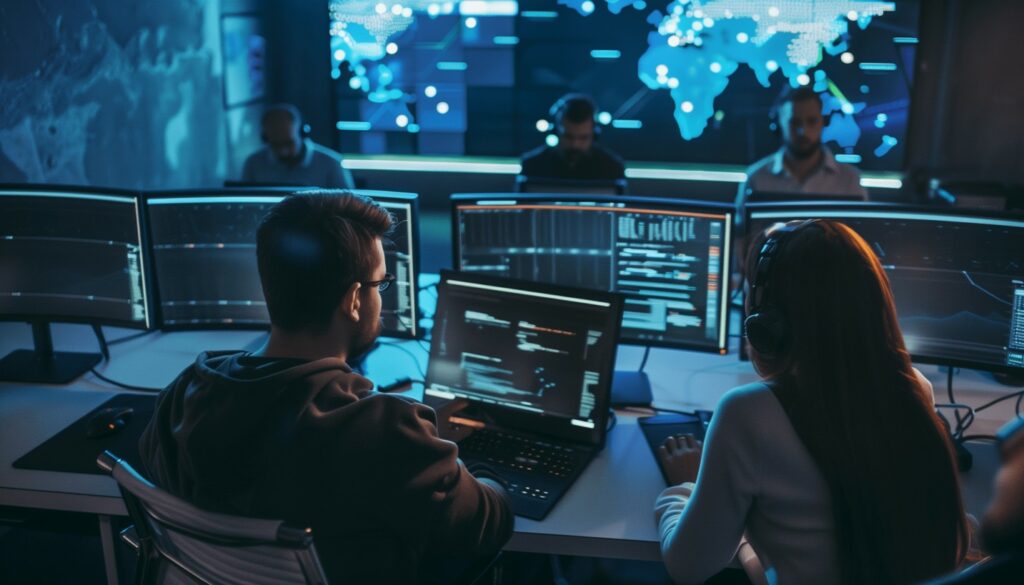Navigating the AI frontier: Cybersecurity challenges and solutions
In an era where artificial intelligence (AI) is revolutionizing industries and our daily lives, new cybersecurity challenges have emerged. As AI systems become increasingly integrated into critical infrastructure, financial systems, and personal devices, robust cybersecurity measures are more pressing than ever. A recent comprehensive study published in the Computer Science & IT Research Journal sheds light on the complex interplay between AI and cybersecurity, offering both theoretical frameworks and practical solutions for addressing these challenges.
The double-edged sword of AI
AI technologies offer unprecedented capabilities for threat detection, automated response, and predictive analytics in cybersecurity. According to Dr. Babajide Tolulope Familoni, the lead author of the study, “Machine learning algorithms can sift through massive datasets to detect anomalies indicative of cyber threats, enabling rapid threat identification and response.” This capability allows organizations to stay one step ahead of cybercriminals, potentially thwarting attacks before they fully materialize.
However, integrating AI into cybersecurity also introduces new vulnerabilities. Adversarial machine learning, for instance, can be exploited by malicious actors to manipulate AI systems, potentially rendering them ineffective against sophisticated attacks. The study highlights the growing concern of AI-generated deepfakes, which pose significant threats to information integrity and can be weaponized for disinformation campaigns or identity theft.
Emerging threats in AI
The research identifies several key areas of concern in the evolving cybersecurity landscape:
- Adversarial attacks on AI systems
- Data privacy and confidentiality breaches
- Manipulation of AI-generated content (deepfakes)
- AI-enabled cyberattacks
- Vulnerabilities in AI-driven IoT devices
- Geopolitical implications of AI-powered offensive cyber capabilities
Dr. Ahmad Ibrahim, a co-author of the study, warns, “The proliferation of AI-driven IoT devices introduces new attack surfaces and vulnerabilities in interconnected systems. As the number of these devices grows exponentially, securing them against cyber threats becomes increasingly challenging.”
Solutions for AI cybersecurity
To address these multifaceted challenges, the research proposes a combination of theoretical approaches and practical strategies. Key theoretical frameworks include:
- Threat modeling for AI systems
- Adversarial machine learning analysis
- Secure multiparty computation
- Formal verification techniques
On the practical front, the study recommends:
- Implementing AI-powered threat detection and response systems
- Enhancing the resilience of AI systems through adversarial training
- Developing AI-specific security measures and best practices
- Investing in cybersecurity awareness and training programs
- Fostering collaboration and information sharing among stakeholders

Ethics and regulation in AI
The integration of AI in cybersecurity raises important ethical questions and regulatory challenges. Dr. Sontan Samuel, an expert in AI ethics cited in the study, emphasizes, “The deployment of autonomous AI systems for cyber defense raises questions surrounding accountability, transparency, and unintended consequences.“
The research calls for comprehensive regulatory frameworks that address data protection, ethical AI practices, and international cooperation in cybersecurity. It stresses the need for a balance between innovation and security, with flexible regulations that can adapt to rapidly evolving technologies and threats.
The human element in AI security
Despite the advanced capabilities of AI, the study underscores the critical role of human expertise in cybersecurity. Dr. Ronchi, a specialist in human factors in cybersecurity, notes, “Human oversight is vital to validate AI-generated insights, assess the severity of security incidents, and prioritize response actions based on business objectives and risk tolerance levels.“
The research recommends ongoing training and skill development programs to equip cybersecurity professionals with the knowledge needed to effectively leverage AI technologies in defense strategies.
Future directions for AI and cybersecurity
As AI continues to evolve, so too will the cybersecurity landscape. The study outlines several key areas for future focus:
- Developing robust defenses against adversarial AI
- Enhancing privacy-preserving AI techniques
- Improving the explainability and transparency of AI systems
- Addressing bias and fairness concerns in AI-powered cybersecurity solutions
- Building cyber resilience through adaptive defense strategies
A call for a holistic approach
The comprehensive analysis presented in this study serves as a wake-up call for organizations, policymakers, and cybersecurity professionals. As Dr. Familoni concludes, “Cybersecurity in the age of AI presents unprecedented challenges and opportunities that require a multifaceted approach. By embracing a holistic strategy that combines theoretical insights with practical solutions, we can harness the power of AI to enhance our cyber defenses while mitigating associated risks.“
As we stand at the crossroads of AI innovation and cybersecurity, the path forward demands collaboration, continuous learning, and a commitment to ethical practices. Only through such a concerted effort can we hope to secure our digital future in an increasingly AI-driven world.
Joe Shenouda Cyber-Consult.org
Sources:
- Familoni, B. T., et al. (2024). Cybersecurity Challenges in the Age of AI: Theoretical Approaches and Practical Solutions. Computer Science & IT Research Journal, 5(3), 703-724.
- Ahmad, I. A. I., et al. (2024). Cybersecurity challenges in smart cities: a case review of African metropolises. Computer Science & IT Research Journal, 5(2), 254-269.
- Sontan, A. D., & Samuel, S. V. (2024). The intersection of Artificial Intelligence and cybersecurity: Challenges and opportunities. World Journal of Advanced Research and Reviews, 21(2), 1720-1736.
- Ronchi, A. M. (2022). Human factor, resilience, and cyber/hybrid influence. Information & Security, 53(2), 221-239

